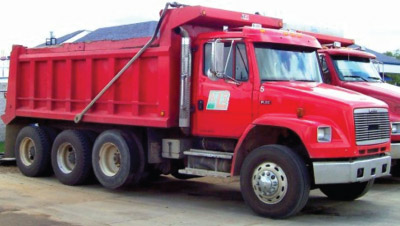Lawn Landscaping Products

Use of Mulch Products When Establishing a Lawn
Using mulch products when installing a new lawn will increase the likelihood of successful lawn establishment. Mulch is used for two main reasons: first to help keep seed moist during germination and second, to prevent seed and soil erosion. Another use is to create a green look during germination and early seedling development. This can be important in highly maintained landscapes or for special events in highly visible areas. Moisture management is key to successful lawn establishment. Other important factors are seed selection, fertility, soil properties, sufficient sunlight, and a long-term maintenance program. Too little moisture can result in partially germinated seedlings dying. Too much water either by rain or aggressive irrigation can cause seed and soil erosion.
There are two types of areas which benefit the most from using erosion control; sloped areas and areas prone to accumulated water runoff. Soil can absorb a limited amount of water in a given amount of time. When it rains hard the soil will allow some water absorbsion. The excess water stays on the surface of the soil and will run downhill. As it continues to rain hard more and more water accumulates at the surface and the water increases in volume and velocity, as the effect intensifies (more water starts moving faster), the water will displace seed, soil, and stones.
The best mulch products will hold moisture near the seedlings and keep surface water movement to a minimum.
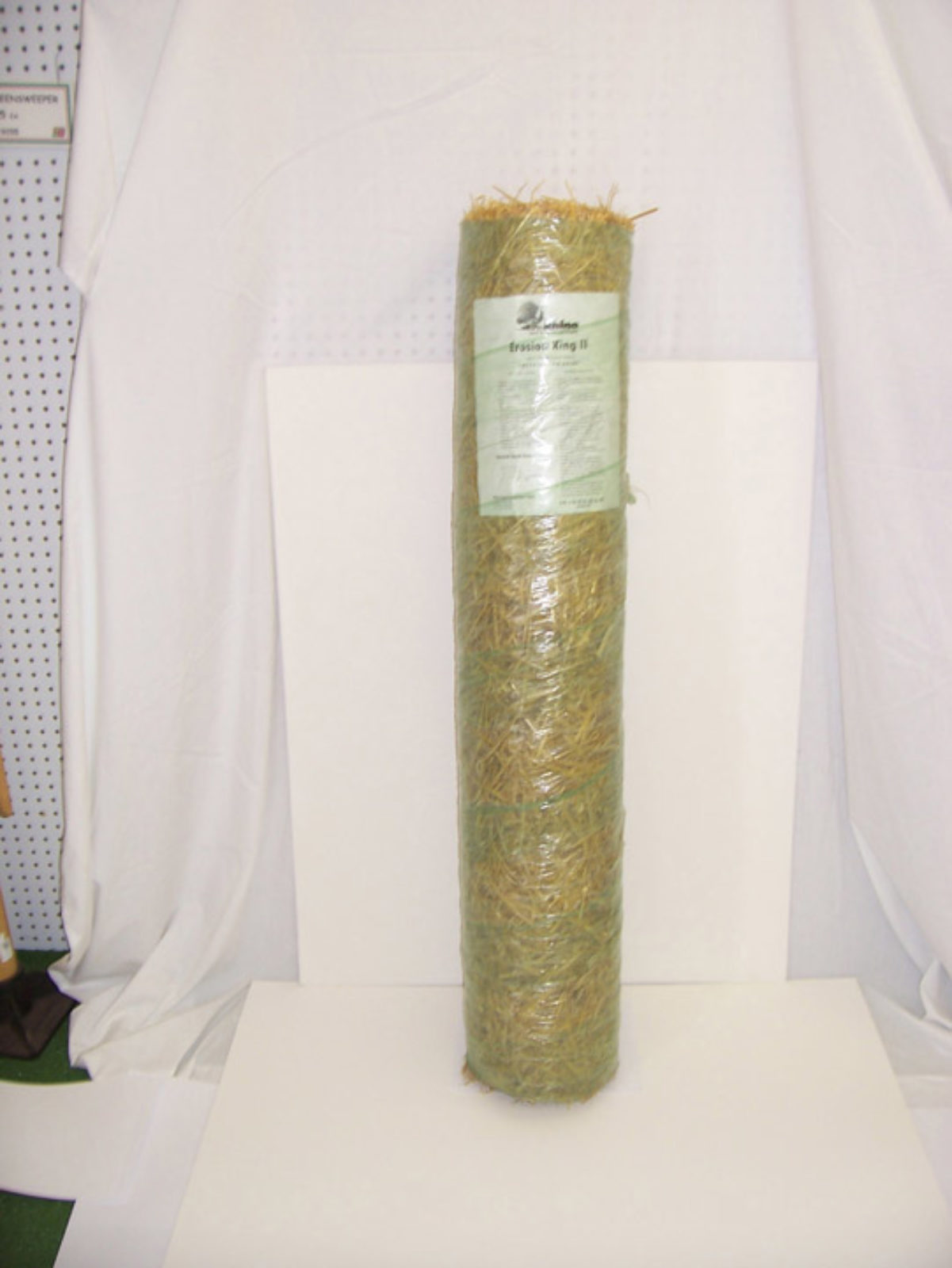
Woven Straw Erosion Blankets
$39.50 / 4' x 50' ft roll (200 sq. ft.)
$48.50 / 4' x 112.5' ft roll (450 sq. ft.)
$59.25 / 8' x 112.5' ft roll (900 sq. ft.)
The most effective lawn establishment mulch products are erosion blankets. These are most commonly made from straw; however long wear blankets can be made from other materials.
A biodegradable straw blanket is typically best for establishing a residential lawn establishment. Long wear blankets are more for drainage basins and channels or other severely sloped areas which will most likely not be mowed.
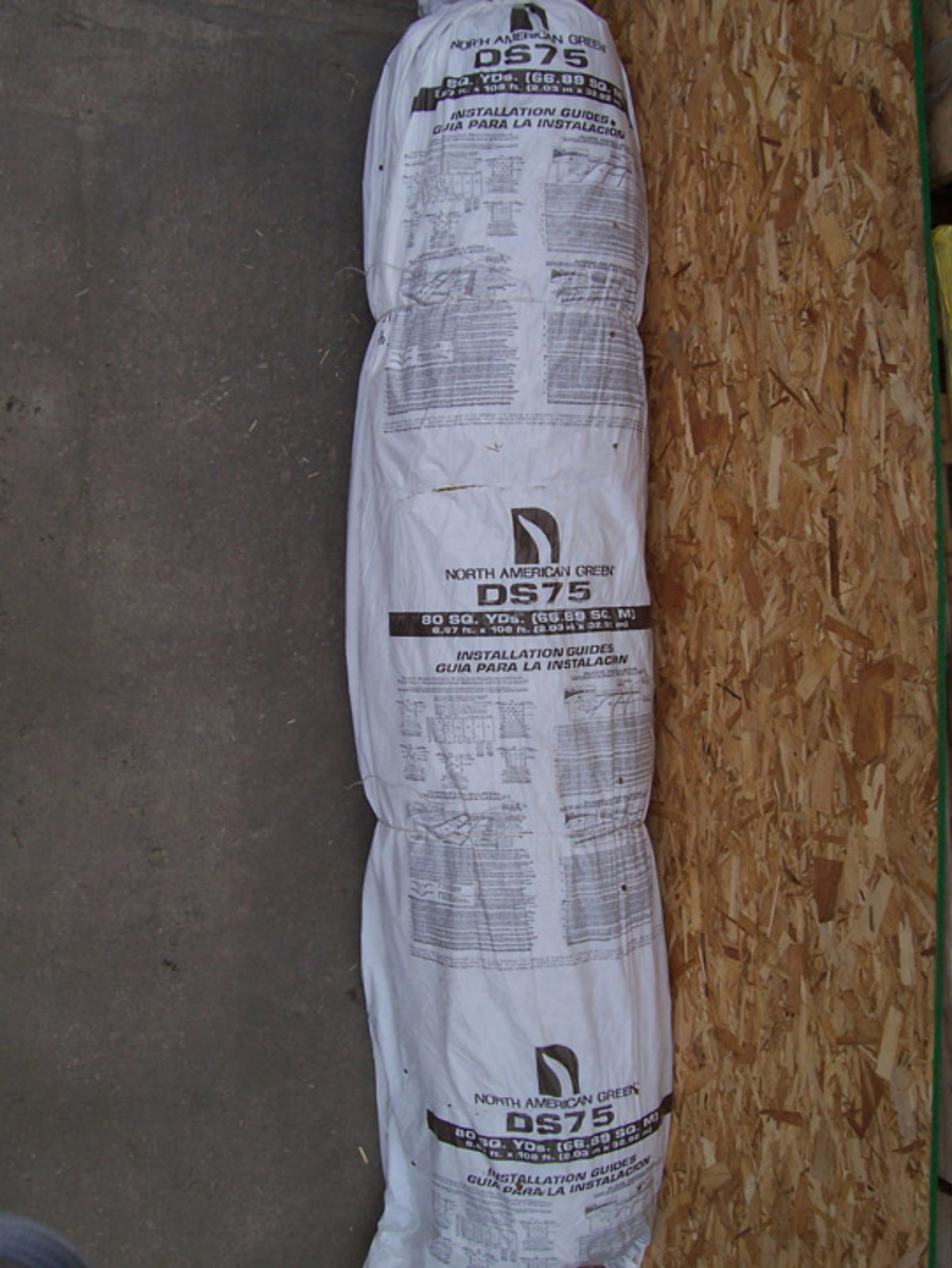
Steep sloped areas should be covered with erosion control blankets. Mild sloping areas where water runs down from a driveway, large walkway or at the end of a downspout should also be covered with straw erosion blankets. Level areas which are not subject to additional water flow will not require straw blankets. Since the erosion blankets are relatively expensive they are typically used sparingly in a residential landscape for lawn establishment.
The photodegradable netting is designed to substantially degrade in 45 days. If the netting comes up easily and appears as though it may get wrapped up on the mower blade rake the excess material out before mowing.
The erosion mats come in 4' x 50', 4' x 112' and 8' x 112.5' rolls.
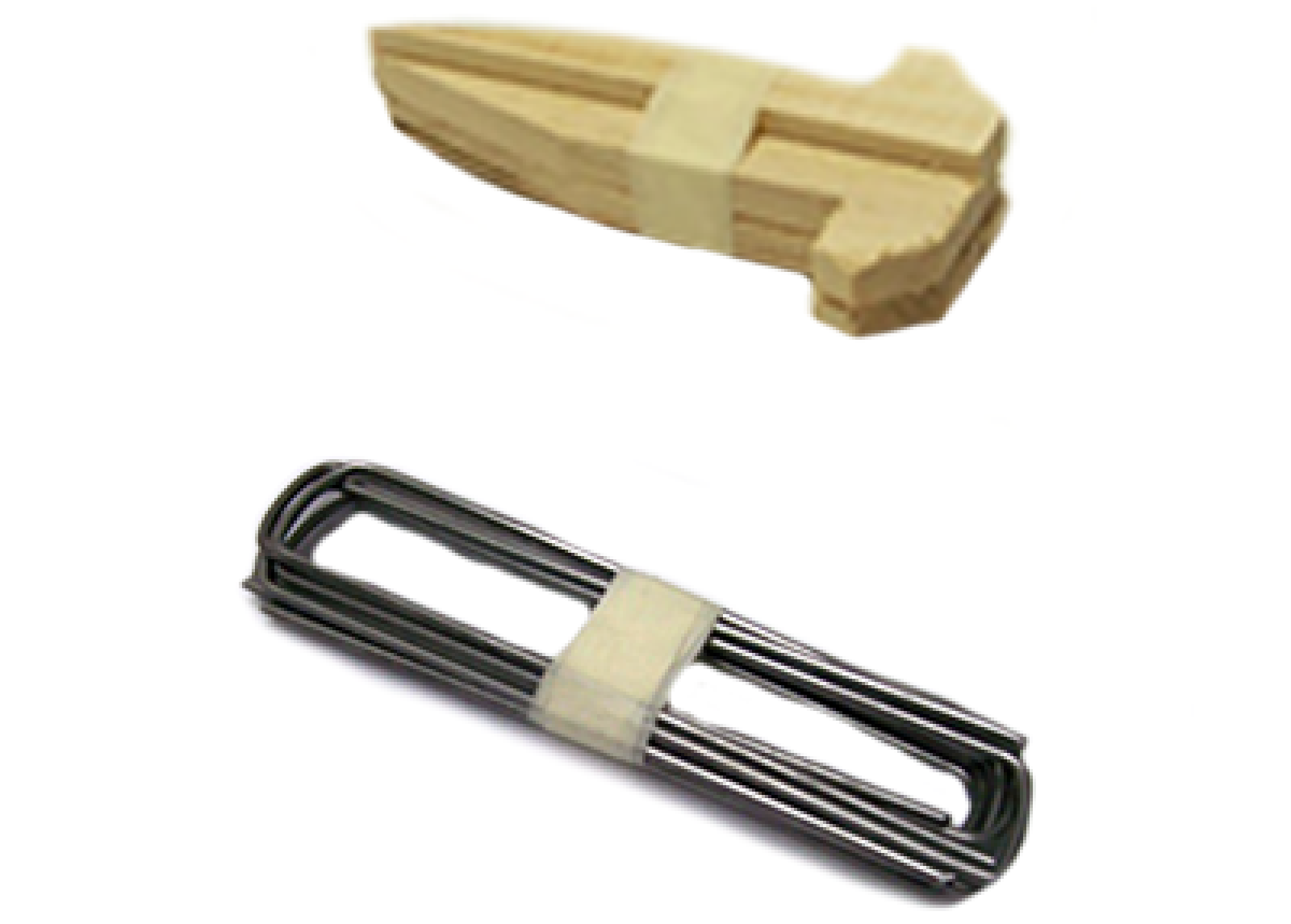
Wood and Metal Stakes
$0.26 / 6" Wood Stake
$0.17 / 1" x 6" Metal Staple
The blankets must be tacked down with metal staples or wood stakes. Typically metal staples are used.
Use at least 50 - 1" x 6" staples per blanket for low to moderately steep slopes. Use additional
staples at the uphill end of the blanket and on overlaps. Bury the top edge of the blanket to keep water from running underneath it.

EZ Straw
$19.95 / EZ Straw Bale
EZ Straw Repair Mix contains a sticky tackifier that helps with erosion and has the straw, seed and fertilizer. It covers 200 sq. ft. per bale.

Straw Bales
$10.50 / Straw Bale
Straw is sourced from chopped down wheat from farm fields. It is effective in creating a layer which reduces water evaporation and therefore retains moisture for the germination process. It can introduce some weed seed and also may be blown around, but is a relatively low cost way to improve germination and turf establishment. It may need to be raked away depending on how it mats down and how much is used. In general one bale will cover approximately 1,000 square feet.

Seed Accelerators
$41.75 / Per Bag
EZ-Mulch is another good product for helping speed the germination and turf establishment process. EZ-Mulch pellets are water absorbing paper and polymer pellets with fertilizer. The pellets expand when watered to protect and create good soil-seed contact. The patented formula retains moisture and soil nutrients, biodegrades naturally and is safe to apply by hand, or can be spread with a broadcast spreader. It is green in color and helps improve the look of the area being seeded where aesthetics are important. A 50 lb bag covers approximately 800 square feet.
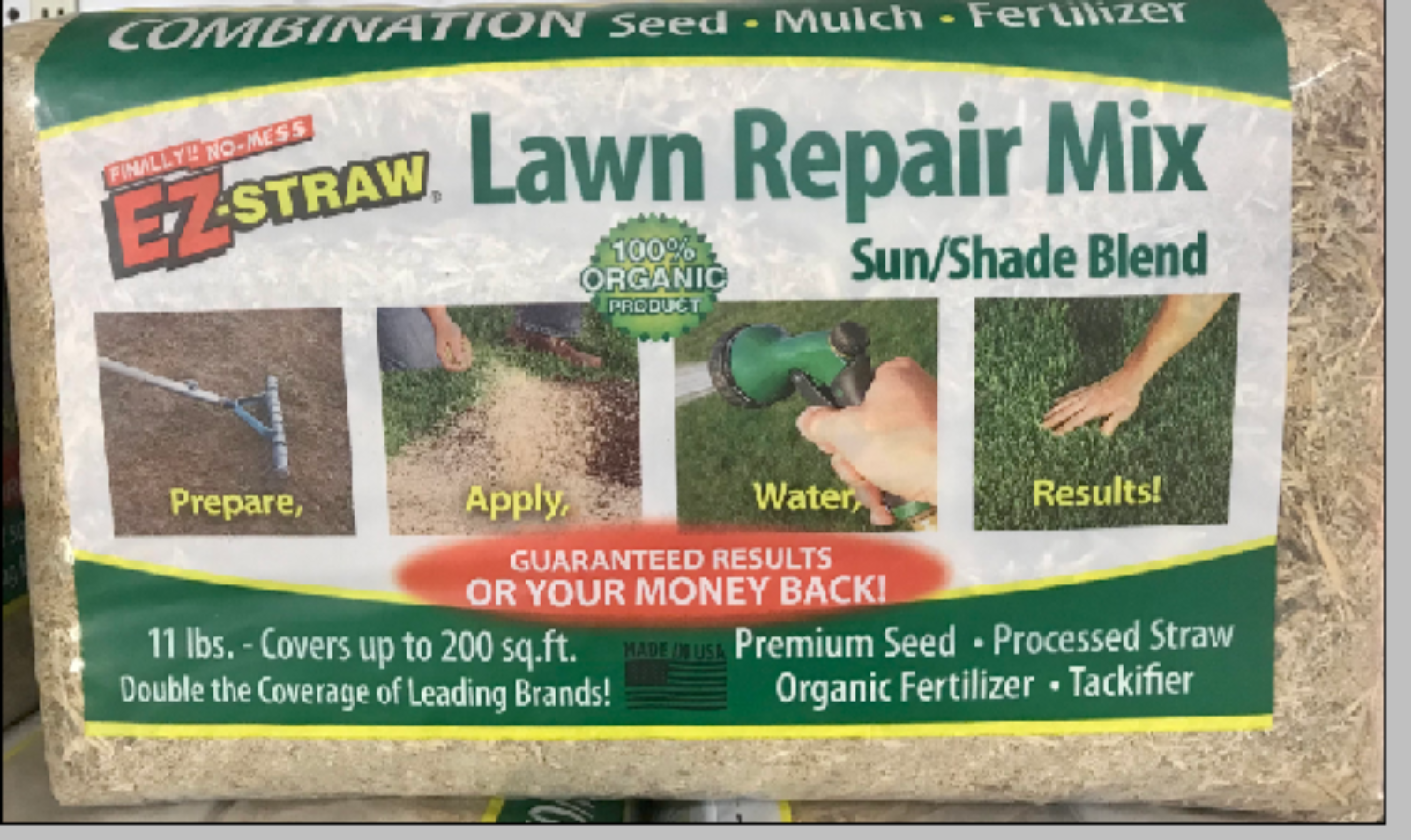
EZ straw sun/shade repair mix
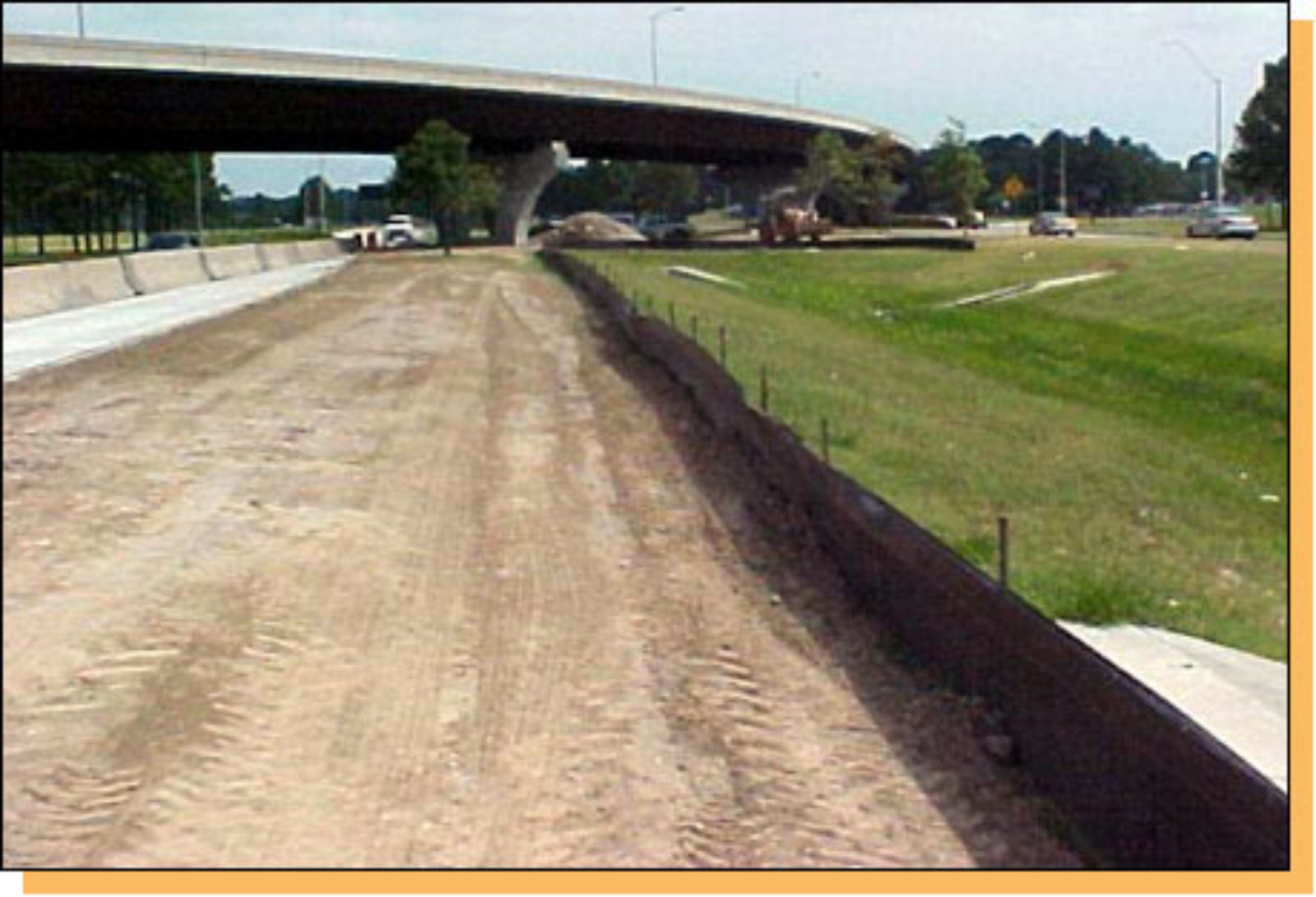
Erosion Control - Silt Fence
Silt fence is used for controlling runoff on excavated sites. The fabric fencing allows water to seep through but keeps all soil from getting through it.
The idea is to keep eroding soil on site. This is to protect neighbors land, roads, roadside drainage systems, bodies of water etc. from being contaminated with the separated silt and sand runoff. It comes in 100 foot rolls the porous fabric is 2’ high.

